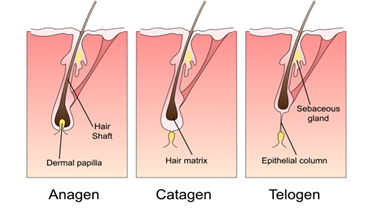
According to Grand View Research, laser hair removal is one of the most popular medical laser applications worldwide and is projected to reach 2.8 billion dollars annually by 2028. Laser hair removal became popular so quickly that by 2005 Alexandrite (the laser of choice at the time) was the second most popular laser crystal grown worldwide, even though there were no other mainstream applications for Alexandrite laser technology. As of 2020, laser diodes held the lion’s share of the market (over 39%), due to their high precision, efficiency, small footprint, and relatively low cost.
Over the past twenty years, enhancements to diode laser technology, specifically high-power diode laser stacks, have allowed far less expensive and far more efficient lasers, with longer lifetimes than flashlamp-pumped Alexandrite and Nd:YAG lasers. Diode lasers can also target a particular body part and effectively remove the hair without harming the surrounding skin in the area.
These advancements have enabled a dramatic decrease in size and the total cost for ownership of a hair removal laser system and have fueled the growth projected in the current market. This blog post will briefly review the basic principles of laser hair removal and why high-power diode stacks have become the most popular solution. After which, we will discuss some of the critical features of the diode stacks used in modern hair removal systems.
Diode lasers can easily remove dark terminal hairs, but historically, they have been much less effective in removing light terminal hair. However, improvements in area coverage and repetition rates have allowed diode lasers to be much more efficient in eliminating light terminal hairs. Intense Pulsed Light (IPL) systems started becoming a contender to laser systems, as it also relies on selective photothermolysis. However, they never gained much popularity since the complexity of these devices required skilled technicians to keep the equipment in operation.

To understand how laser hair removal works, understanding the growth cycle of hair follicles is essential. As shown in the image to the right, there are three different stages in the hair growth cycle: anagen (growth), catagen (atrophy), and telogen (dormancy). Of these three stages, laser hair removal is only effective during the anagen stage of growth. The effectiveness at the anagen stage is due to the relatively large size of the bulb at the bottom of the follicle and the fact that it overlaps with the dermal papilla, which is critical for hair growth. At this stage, the laser light can transmit through the epidermis/dermis and be directly absorbed by the hair, burning out and killing the dermal papilla, rendering it permanently inactive. Therefore, it is critical to select a laser wavelength that is capable of simultaneously being absorbed by the melanin in the hair follicle and allowing transmission through the soft tissue of the dermis. As a side note, this is also why laser hair removal must be split into three separate treatments spaced out over several weeks since, at any given time, your multiple hair follicles are in one of these three stages.

To understand which type of laser is ideal for this application, we must look at the absorption properties shown in the figure to the right. From this image, we can see that in the 700 nm to 1000 nm region, there is a dip in both the hemoglobin and water absorption, which correlates not only to Alexandrite but also GaAs. When laser hair removal started, it was initially far more efficient to generate the high laser flounces needed (20 J/cm2 or greater) via Alexandrite laser technology, which can easily produce 60 J pulses at 755 nm. However, these lasers are highly inefficient, often taking upwards of 2kW of power across the flashlamps to be swung over micro- or millisecond pulse durations. Therefore, high power pulse forming networks (PFNs) consisting of large inductors and mercury relays are bulky, costly, extremely noisy, and off-putting to many patients. With the recent developments in diode laser technology, companies have been producing highly efficient and reliable 808nm and 940nm diode stacks with high output powers into the kilowatt range.

Because of their compact and robust design, our Laser Diode Stacks are incredibly durable and easy to integrate. Therefore, requiring minimal maintenance significantly reducing the overall cost of ownership. The compact nature of these diodes also allows for integration directly into the laser hair removal system’s handpiece, reducing the complexity, fragility, and inefficacy of fiber optic delivery systems. A perfect example of this is the series of actively cooled, vertical diode laser stacks. This unit can produce an output power of up to 1.6kW and is available in either 1 or 2 stacks. This level of output power corresponds to 110J per pulse at 100ms pulse width (typical pulse widths for laser hair removal are between 0.5 and 300ms), which is capable of producing a 26mm diameter spot with a fluence of 20J/cm2 in comparison to the maximum spot size of 18mm produced by most high-end Alexandrite laser systems.
See our QCW Laser Diode Stacks Here!
Here at RPMC lasers, we are proud to offer a wide range of high-power laser diode bars and stacks, which are ideal for laser hair removal as well as other aesthetic/dermatological applications such as treatment of vascular lesions, wrinkles, acne, fat cells or pigments, and tattoo removal.
Talk to one of our knowledgeable Product Managers today by emailing us at info@rpmclasers.com or Contact Us with the button below!
Have questions?

 SHIPS TODAY
SHIPS TODAY 